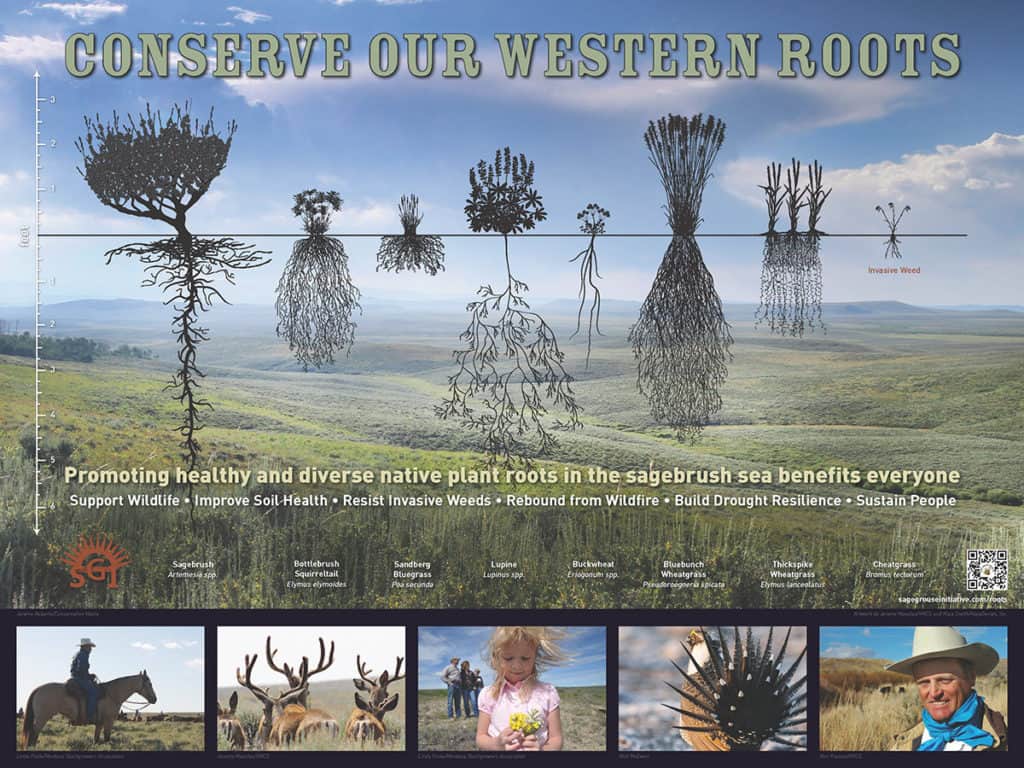Temperate grasslands are third in the world for soil carbon storage, and aboveground native vegetation sequesters additional carbon. When native grasslands are plowed for tillage agriculture, stored carbon is released into the atmosphere and adds to greenhouse gases. Grasses, forbs, and shrubs native to the Northern Great Plains have deep roots that help stabilize soils and retain water, which reduces runoff and erosion and minimizes downstream flooding. This keeps more water and resources on the land for people, cattle, and wildlife.
Non-native invasive annual plants (e.g., cheatgrass and ventenata) have shallow root systems that lead to soil erosion, loss of water retention capabilities, and increased wildfire risk. Conversely, native and diverse grasslands provide more robust pollinator habitat and shelter used as nesting and hiding cover by an array of wildlife species. Native plants are also adapted to the hot, dry conditions of summer on the plains; thus, they are more resistant to wildfire and, in the absence of competition from invasive annual grasses, more likely to recover when a wildfire does occur.
Native grasslands provide rangeland for cattle and support the Nation’s beef industry. Among the iconic wildlife of the Northern Great Plains are pronghorn, mule deer, and the American bison. The region also provides important habitat for a broad spectrum of migratory and resident birds. NGPJV partners are working to influence policy and programs that support the people who are stewarding the land and delivering ecosystem services. This stewardship has long-term benefits for the resilience of landscapes, communities, and wildlife, not just in the Northern Great Plains, but also across the continent.

